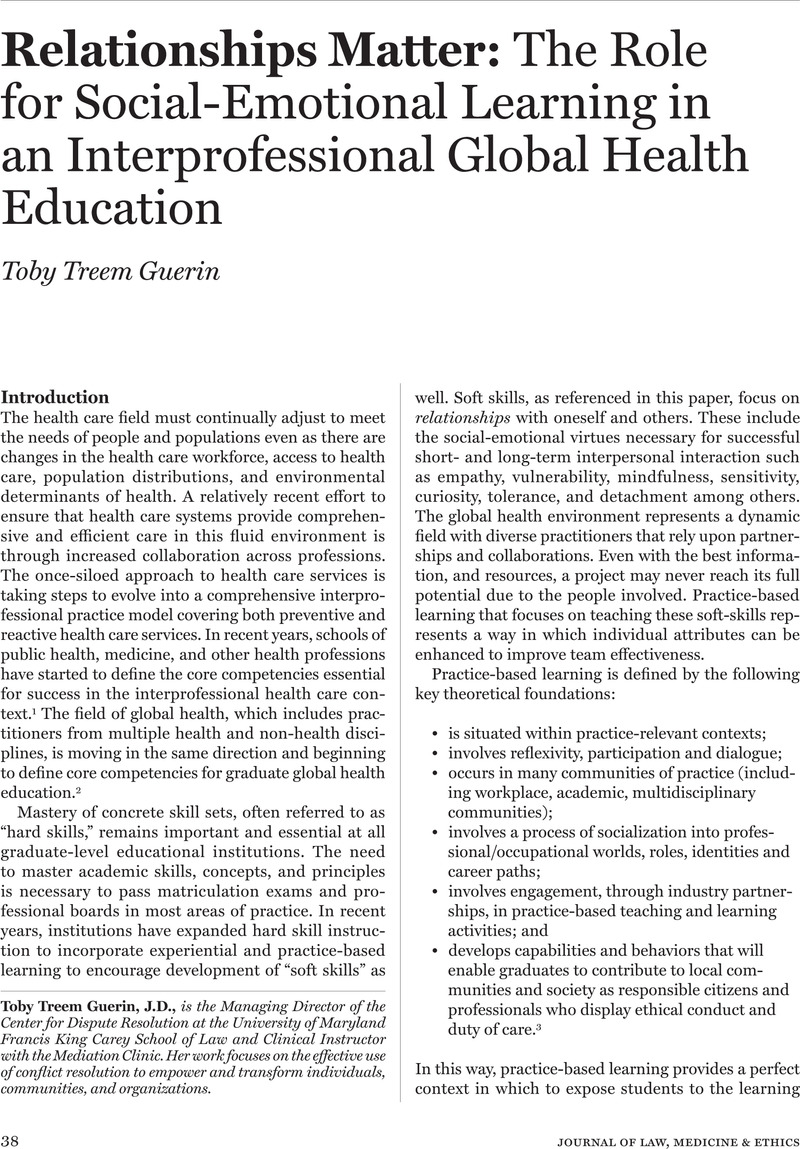Crossref Citations
This article has been cited by the following publications. This list is generated based on data provided by Crossref.
Rowthorn, Virginia
Olsen, Jody
and
Hirshon, Jon Mark
2014.
Introduction.
Journal of Law, Medicine & Ethics,
Vol. 42,
Issue. S2,
p.
5.
McIntosh, Kam
2016.
Does a patient’s personality style impact health outcomes?.
The Journal of Haemophilia Practice,
Vol. 3,
Issue. 2,
p.
34.
Henderson, Saras
Dalton, Megan
and
Cartmel, Jennifer
2016.
Using Interprofessional Learning for Continuing Education: Development and Evaluation of the Graduate Certificate Program in Health Professional Education for Clinicians.
Journal of Continuing Education in the Health Professions,
Vol. 36,
Issue. 3,
p.
211.
Cook, Catherine
and
Brunton, Margaret
2018.
The importance of moral emotions for effective collaboration in culturally diverse healthcare teams.
Nursing Inquiry,
Vol. 25,
Issue. 2,
Mendes, Isabel Amélia Costa
Ventura, Carla Aparecida Arena
Queiroz, Artur Acelino Francisco Luz Nunes
and
de Sousa, Álvaro Francisco Lopes
2020.
Global Health Education Programs in the Americas: A Scoping Review.
Annals of Global Health,
Vol. 86,
Issue. 1,
Kuzemski, Dawn
Thirlwall, Alison
Brunton, Margaret
and
Brownie, Sharon
2022.
I speak a little Arabic: Nursing communication in a cross‐cultural context.
Journal of Clinical Nursing,
Vol. 31,
Issue. 1-2,
p.
145.
Huang, Cheng‐Yi
Tsai, Li‐Ya
Chung, Chu‐Hua
Shih, Fen‐Fen
and
Wang, Yu‐Ming
2023.
The effect of design thinking approach in interprofessional education programme of human sexuality course: A quasi‐experimental design.
Nursing Open,
Vol. 10,
Issue. 2,
p.
967.
Frazier, Tyralynn
and
Doyle Fosco, Sebrina L.
2024.
Nurturing positive mental health and wellbeing in educational settings – the PRICES model.
Frontiers in Public Health,
Vol. 11,
Issue. ,





